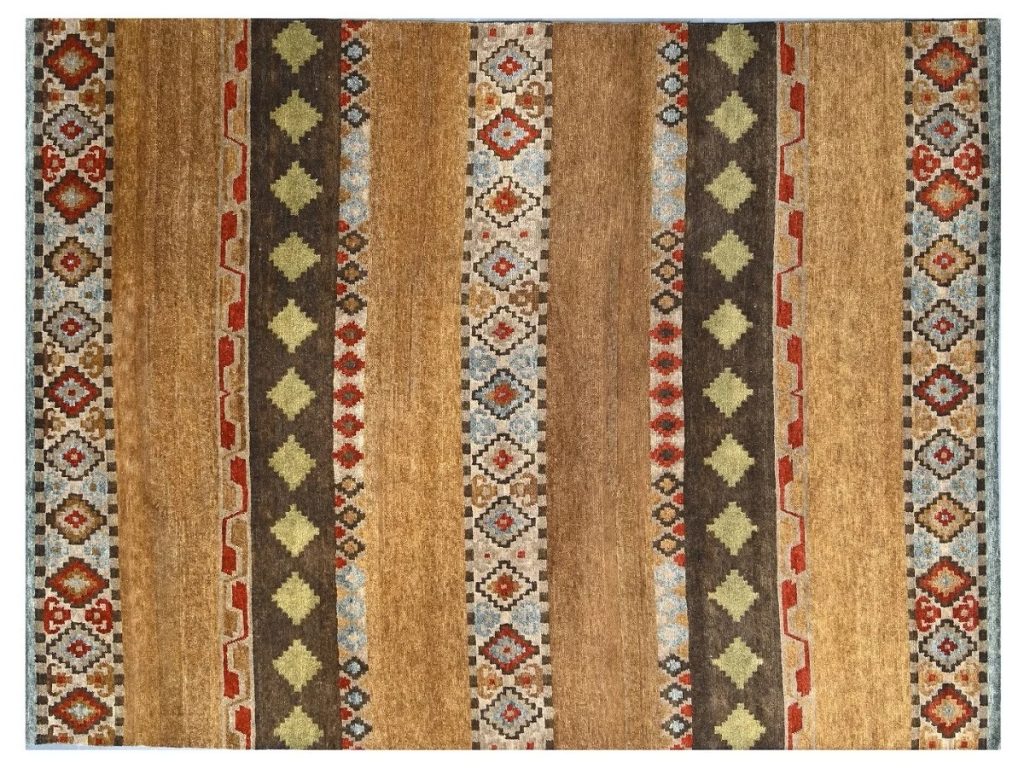Tribal rugs not only serve as beautiful decor but also carry a rich tapestry of history, culture, and craftsmanship. Their intricate designs and handwoven beauty make them highly sought after by collectors, enthusiasts, and homeowners alike. However, finding authentic tribal rugs isn’t always straightforward. Knowing what to look for is essential to ensure you’re purchasing an authentic piece of artistry rather than a machine-made imitation.
This guide will walk you through the fascinating world of tribal rugs, key elements to examine, and tips to help you confidently shop for authentic rugs.
Understanding Tribal Rugs
What Are Tribal Rugs?
Tribal rugs are handwoven textiles crafted by various nomadic or semi-nomadic tribes. These rugs often serve a practical purpose in tribal life while also embodying the heritage and traditions of their makers. Each piece reflects the unique culture and identity of the tribe that created it, telling stories through its patterns and colors.
Types and Origins of Tribal Rugs
Tribal rugs originate from regions such as Iran, Afghanistan, Turkey, Morocco, and the Caucasus. Each region and tribe has distinctive weaving techniques, motifs, and styles. Some common types include Persian Qashqai rugs, Turkish Kilim rugs, and Moroccan Berber rugs. These rugs are often passed down through generations, making authentic pieces valuable both in monetary terms and cultural significance.
Key Elements to Examine
When sourcing tribal rugs, it’s important to closely examine certain characteristics that can indicate authenticity and quality. Here’s what to focus on:
Material
Authentic tribal rugs are typically made from natural fibers like wool or cotton. Wool is the most common material, prized for its durability, softness, and versatility. High-quality wool from specific regions can also have a beautiful luster.
Avoid rugs made from synthetic fibers, as they are mass-produced and lack the handcrafted authenticity of traditional tribal rugs. Always ask the seller about the material used and inspect the texture and feel.
Weave
The weaving technique plays a crucial role in the quality of a tribal rug. Handwoven rugs are more durable, intricate, and valuable than machine-made options. Key indicators of handweaving include irregular knots and inconsistent stitching on the back.
For example, Persian rugs often feature asymmetrical knots, while Turkish rugs are known for symmetrical knots. The higher the knot density per square inch, the finer the weave and the more detailed the rug’s design.
Design
Tribal rug designs are rich with cultural significance. Motifs often represent natural elements, animals, and tribal stories, serving as a narrative of the weaver’s heritage.
- Geometric Patterns are common in Moroccan and Turkish rugs.
- Floral Motifs can often be seen in Persian rugs, reflecting nature’s influence.
- Symbolic Designs may include protective charms or tribal emblems.
Authentic tribal rugs tend to have unique, slightly irregular patterns due to handweaving, whereas machine-made rugs will look overly symmetrical and uniform.
Color
Natural dyes are a hallmark of authentic tribal rugs. Dyes derived from plants, roots, and insects create vibrant yet earthy hues. These natural dyes also age beautifully, adding character to the rug over time.
Look for variations in color, known as “abrash,” which occur naturally in hand-dyed yarns. Uniform colors throughout the rug are a sign it may be dyed with synthetic chemicals, which lack the longevity and aesthetic appeal of natural dyes.
Identifying Authentic Pieces
While authenticity can sometimes feel elusive, there are telltale signs to look for to ensure your investment is genuine.
Imperfections
No handmade rug will be perfect. Slight irregularities in the weave, pattern, or shape should reassure you of its authenticity and handwoven nature. Machine-made rugs are often flawless but lack the soul and character of tribal craftsmanship.
Selvage and Fringe
Examine the edges of the rug. An authentic tribal rug will have hand-knotted selvage and fringe, often rough or uneven. Machine-made rugs tend to have perfectly straight or glued-on edges.
Handle and Drape
The feel and weight of a rug can also provide clues. Authentic tribal rugs are typically dense and sturdy but also soft and pliable. Machine-made rugs, on the other hand, may feel overly stiff or brittle.
Where to Buy Tribal Rugs
Knowing where to shop can make a huge difference in finding a quality tribal rug. Here are three key sources to consider when you’re ready to buy tribal rugs.
Reputable Dealers
Established dealers are one of the safest bets for sourcing authentic tribal rugs. They often have a curated selection and deep knowledge of the rugs they sell. Always ask the dealer about the rug’s origin, materials, and any accompanying certificates of authenticity.
Auctions and Estate Sales
Auctions and estate sales can be treasure troves for discovering unique tribal rugs. However, they can also be unpredictable. Do your research beforehand, and don’t hesitate to bring an expert along if possible.
Online Marketplaces
Shopping online can be convenient, but it requires extra caution. Stick to platforms with good reputations and strong return policies. Check detailed photos, read reviews, and verify the seller’s credibility before making your purchase.
Some well-regarded online sources for tribal rugs include RugKnots, Etsy, and specialist websites that focus on handmade carpets.
Caring for Your Tribal Rug
Once you’ve purchased your tribal rug, taking care of it will ensure it remains a valued part of your home for years to come.
Cleaning
Regular vacuuming is essential to prevent dust buildup. However, avoid using harsh chemicals or aggressive cleaning techniques. For deeper cleaning, it’s best to rely on professional rug cleaning services that specialize in handwoven carpets.
Storage
If you need to store your rug, roll it up (never fold it!) and place it in a breathable, cotton bag to prevent damage. Keep it in a cool, dry place away from direct sunlight and moisture.
Bringing It All Together
Sourcing authentic tribal rugs requires an eye for detail and an appreciation for craftsmanship. By understanding the materials, weave, design, and where to shop carpets, you’ll increase your chances of finding a genuine piece that adds beauty and heritage to your space.
Whenever you’re ready to explore exquisite handwoven rugs, remember to prioritize quality over quantity, ask questions, and shop with trusted dealers. Tribal rugs are much more than floor coverings; they’re art steeped in culture, history, and skill.








